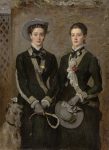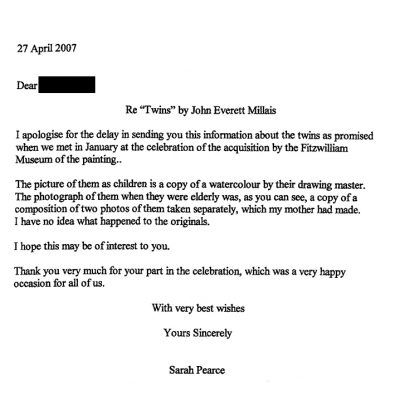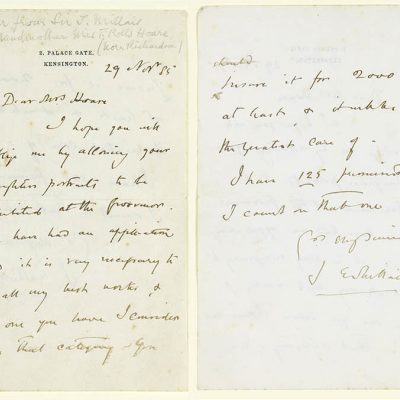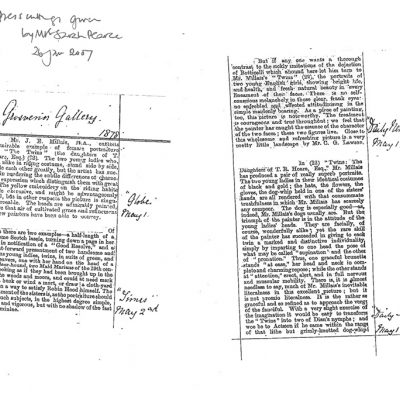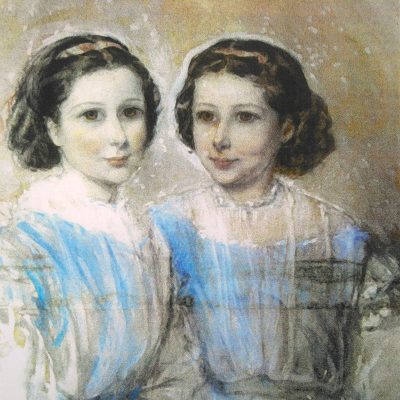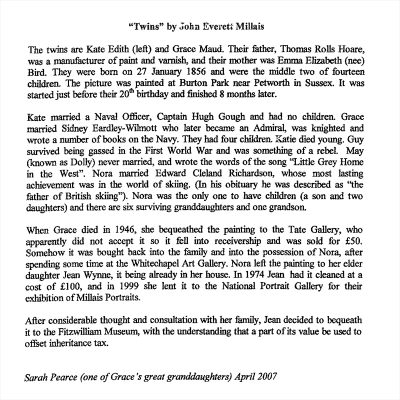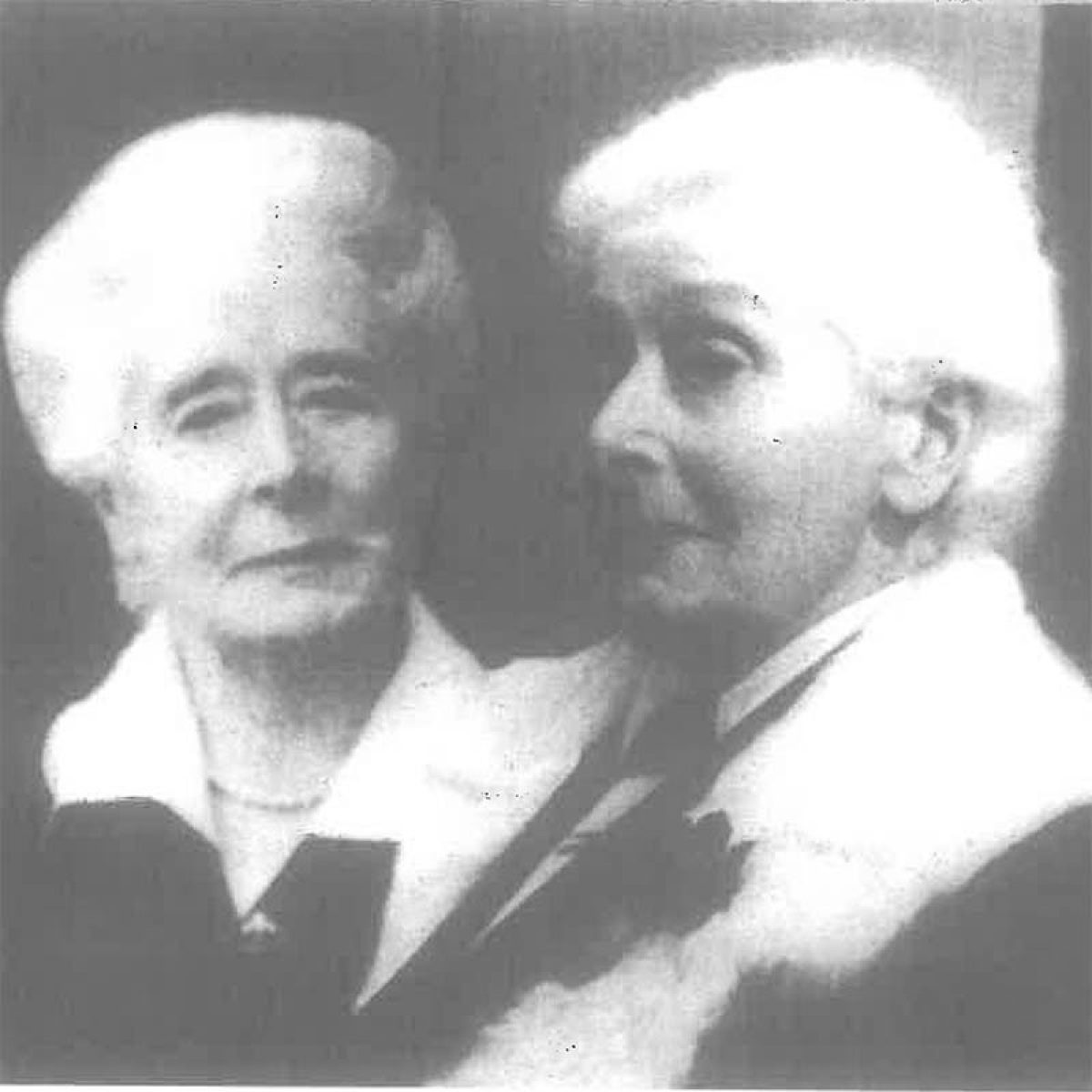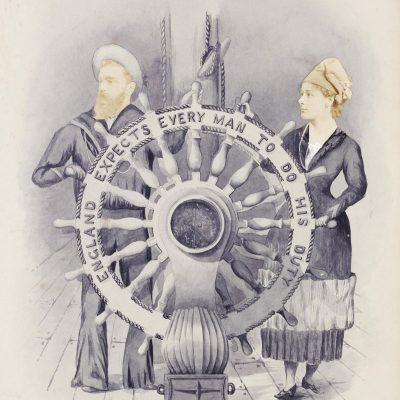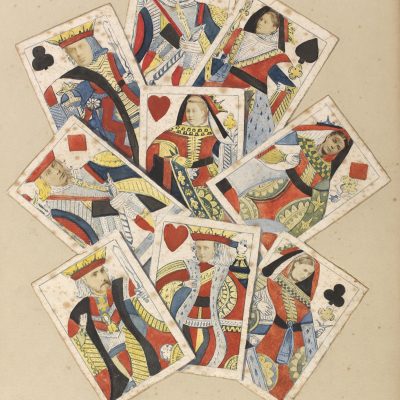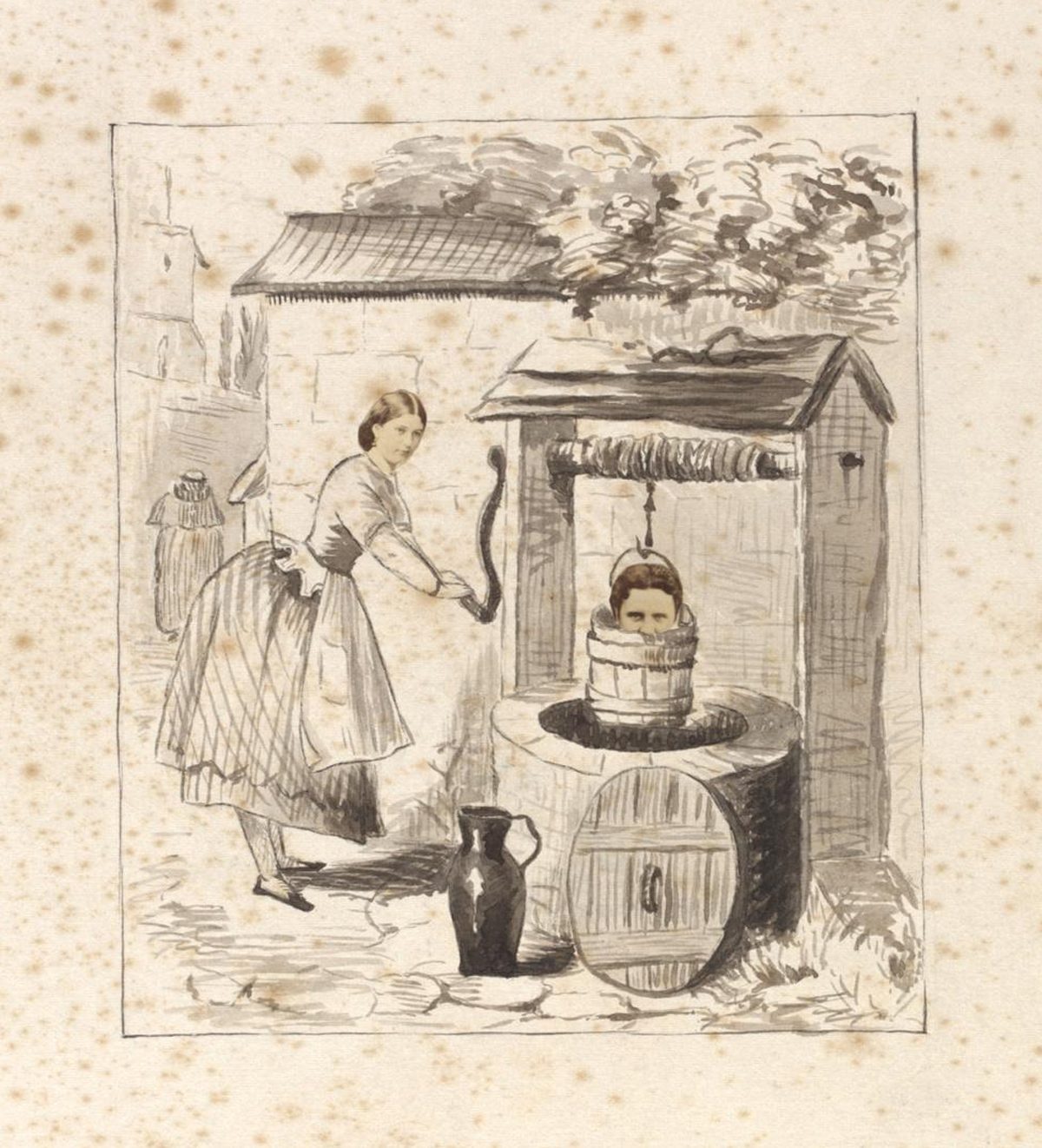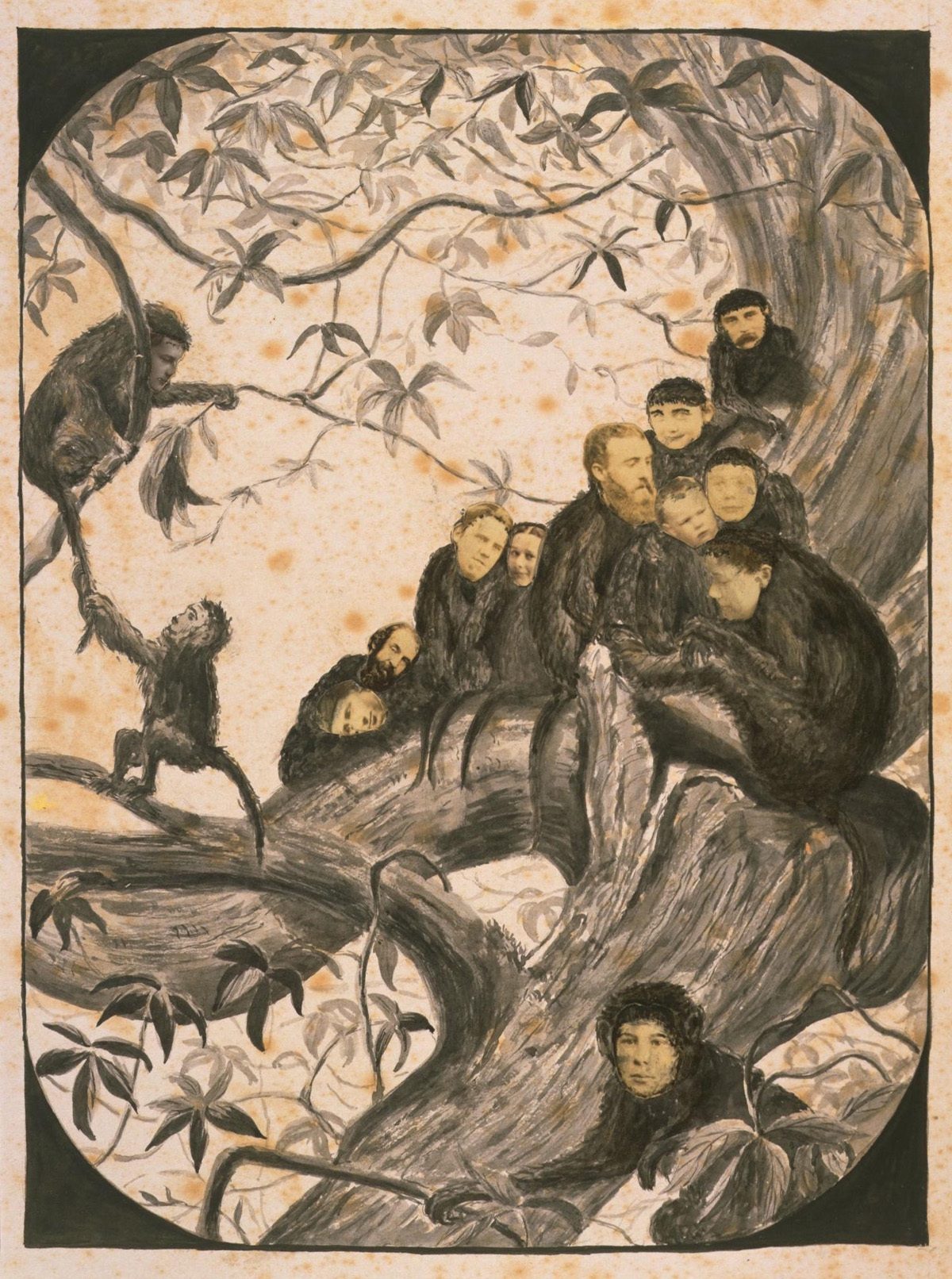1. Planning our Project

The Twins by John Everett Millais at The Fitzwilliam Museum.
‘The Twins’ is one of the most popular paintings in the Fitzwilliam Museum, and thousands of visitors enjoy looking at it and talking about it every year. There are several other paintings in the museum by Millais. He was a famous Victorian artist and his life and works have been extensively researched and documented. But, other than their names, we didn't know anything about the twins who were depicted in his painting. We were interested in finding out more about them: who they were, and what happened to them after the painting was made.
We decided to explore the lives of these two young women, hoping to discover more about the lives of women in the Victorian age - individuals whose stories have for many years only been told in relation to the men around them.
Before we finalised our project plan, we spent time in the gallery looking in detail at the painting, to help to guide our research questions.
Click on the thumbnail in the top right of the screen to download a high-resolution image of ‘The Twins’ and take a long, careful look at it.
SPEND 5-10 MINUTES NOTING DOWN EVERYTHING YOU CAN SEE.
WHAT ARE YOUR IMMEDIATE REACTIONS TO THE PICTURE?
Make a quick list of any initial questions you would like to ask.
The painting is an made of oil paint on canvas and measures 153.5 x 113.7cm.
It depicts two young women, aged around 20, wearing similar outfits. There’s a close physical resemblance between the two, and the title tells us that they are twins.
But there are subtle differences too.
Look at their clothes and faces – what differences can you describe?
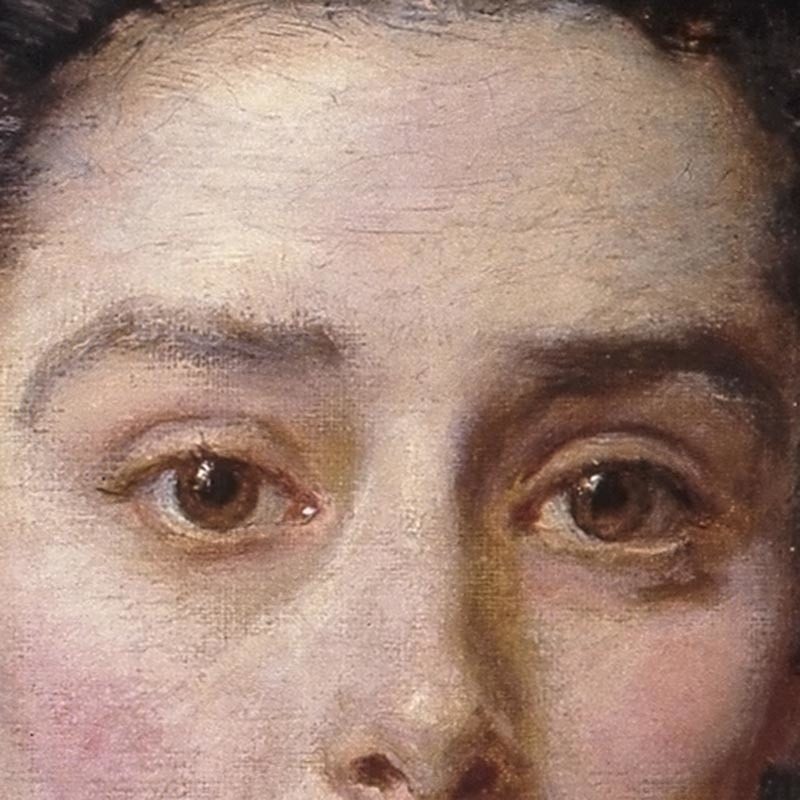
Confident Kate?
Kate is wearing a hat and looks directly at us, with calm eyes and a faint smile on her lips. Her body seems relaxed.
How would you describe her? Confident? Assertive? Cocky?
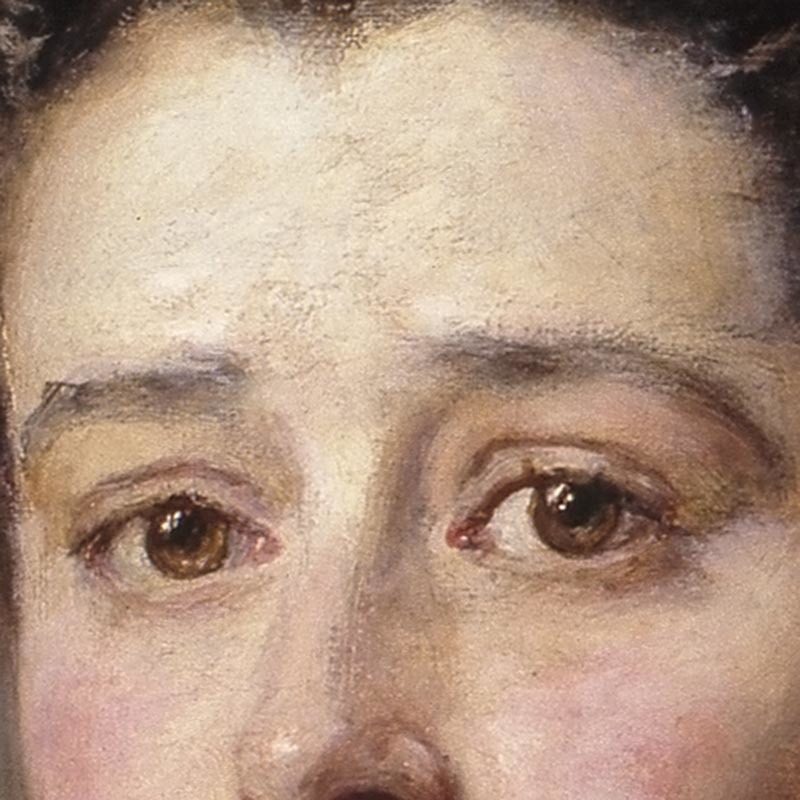
Anxious Grace?
Grace inclines her head slightly towards her sister. She too looks at us, but less squarely. The brows above her large round eyes are slightly raised.
How does she appear to you? Worried? Nervous? Inquisitive?
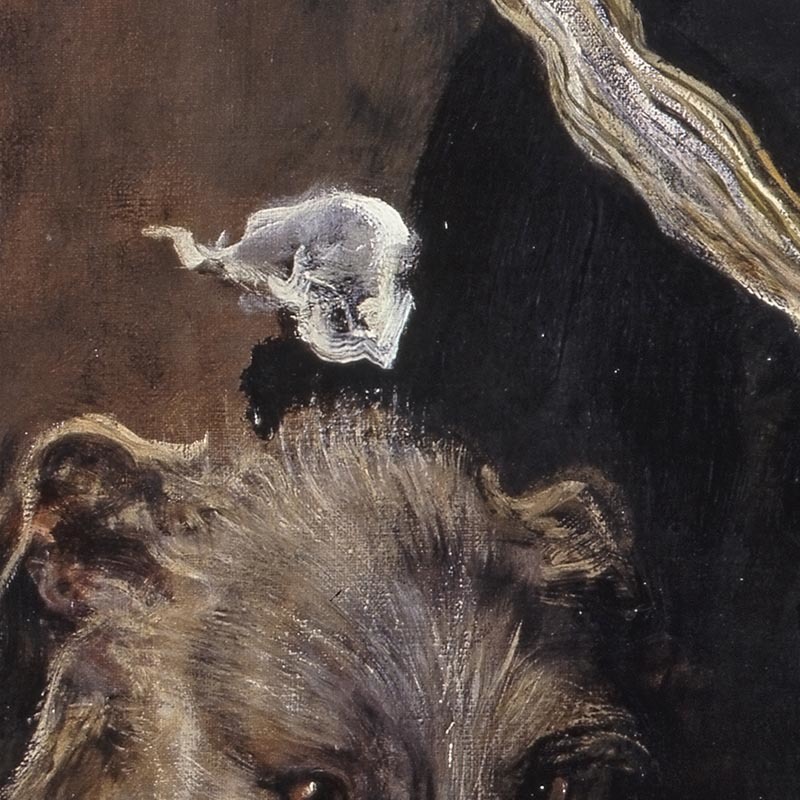
Kate's outfit
Kate holds a dog whip in her gloved hands, while a wolf hound stands obediently beside her. At first glance she appears to be very well turned out. But look more closely. There’s a tuft of hair escaping from under her hat. A white handkerchief is poking out of her pocket.
What does this suggest about her?

Grace's outfit
Grace's outfit seems immaculately crisp and clean, with bold ruffles of lace down her front. She grips her hat rather tightly in her left hand. A useful prop perhaps to fidget with and help to calm her nerves?
We decided that it would be interesting to know more about these two: who they were, what they became.
So we started to do some reading.
2. Using Resources
Our next step was to look at what information resources were available.
First off, the Fitzwilliam Museum website gave us some basic information about the painting: when it was painted, how big it is, what it’s made out of and who the artist and sitters are.
Our next step was to consult the Fitzwilliam's object files. Everything in the museum has its own object file with detailed information about where it came from, what condition it is in and other related records and correspondence. You can contact the education department of your local museum to ask about how to access these records.
There were quite a few documents in the file.
Take a few minutes now to look at each of them and make a note of what you find out.
What can we find out from these documents?
The letter from Sarah Pearce was sent to the museum in 2007 and so we were able to make contact with her, and with Grace’s other great grandchildren, to construct a family tree.
Kate married a naval officer, Captain Hugh Gough. They had no children.
Grace also married a seafaring man, Sidney Eardley-Wilmott who wrote a number if books about the Royal Navy, became an admiral and was knighted.
Grace and Sidney had four children; Katie who had a daughter and two sons; Guy who survived being gassed in the First World War; May who wrote the words of the song ‘Little Grey Home in the West';. and Nora who married Edward Cleland Richardson, author of one of the first books in English on how to ski. Nora and Edward had two children themselves, a son and two daughters who between them had six daughters and a son.
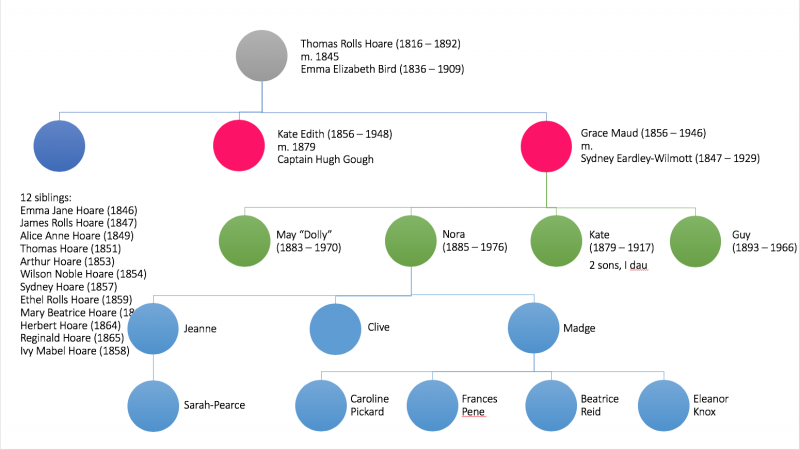
Validity of Sources
Considering the above sources and research, make a list of any potential problems that there might be with using these as part of your own research.
3. Who was John Everett Millais?
Millais is a well-known Victorian artist, and we were already familiar with some of his work. But to help us better understand the context of this painting we decided to research him from scratch so we didn’t miss anything out.
On online search revealed that there were some paintings by him at The National Portrait Gallery [NPG] in London, so we went to look at these. At the NPG we made use of the Heinz Archive, which contains a wealth of documentary evidence about the Gallery's collections. We looked at records of other portraits painted by Millais, and tried to discover if there were any other paintings of the Hoare family.
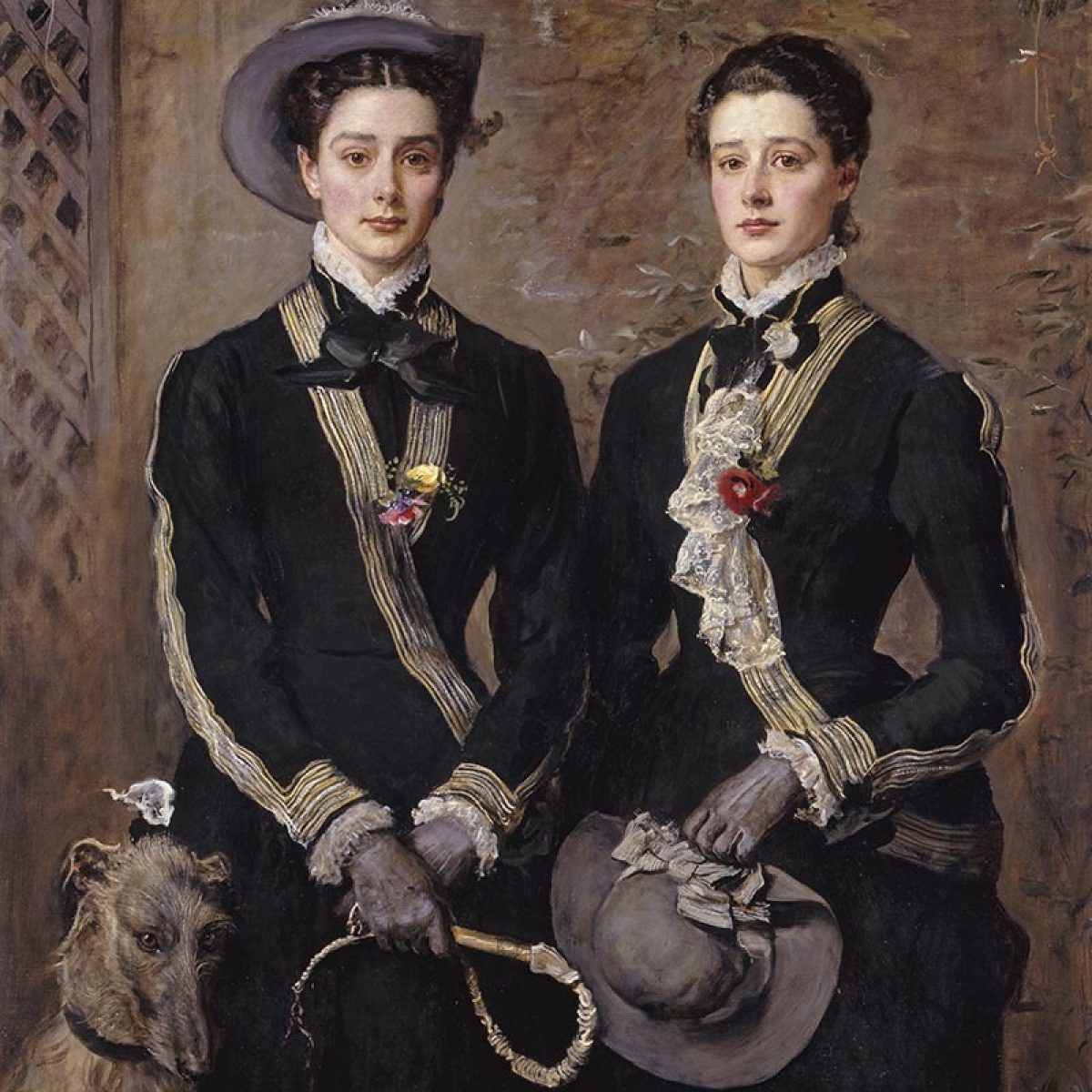
4. Why was the painting made?
Sarah Pearce's note in the collection file told us that the painting was begun just before the sisters' 20th birthday, and that it took 8 months to complete. But we wanted to know more.
What would you like to know about the circumstances of the painting’s creation?
Take a moment to note some questions down
The NPG let us see the object file that they had compiled on ‘The Twins’ when it was included in an exhibition at the Gallery in 1999. And we were fortunate to be able to talk to the curator of that exhibition, Peter Funnell, a leading expert on Millais, who told us more about the artist’s work as a portraitist.
We found out more about Millais by looking at other paintings by the artist and visiting the library.
This research enabled us to explore the following questions:
Whose idea was it to have the painting made? And who paid for it?
The painting was commissioned from Millais by the twins' parents to mark their 20th birthday. On meeting Kate and Grace for the first time, Millais described them as “really pretty, elegant girls” (Funnel and Warner, 1999, pp. 209) The NPG exhibition catalogue told us that, "Thomas Rolls Hoare of the paint and varnish manufacturers Noble and Hoare comissioned this double portrait for 1,500 guineas" (Rosenfield and Smith, 2007, pp. 102) The picture was exhibited at the Grosvenor Gallery in London, in 1878.
Why did the painting take 8 months to finish? Was this normal?
Millais began work in December 1875, but by the following April concerns had been raised by the twins’ parents about the clothes that their daughters were shown wearing in the painting. Millais’ friend Louise Joplin recalled the outcome in her autobiography “He has had to paint out the riding-habits of the twins, as their people don’t like them, and he says they look better in other things, so the objectionable hats will go too, I suppose.” (Jopling, 1925, pp. 96) The original double-breasted riding jackets and skirts were altered to a more fashionable military-style walking outfit, and the portrait was eventually completed in August 1876. The dimensions of the canvas (153.5cm x 113.7cm) are unusual, and the canvas seems to have been cropped down.
5. Who was Kate Gough?
The painting’s object file in the Fitzwilliam led to some exciting discoveries about the sitters and their family. We were able to make contact with some their descendants via email, and discovered that Kate was herself an artist and photographer. A major breakthrough in our project came via a google search, when we discovered that there was an album of photo-collages by Kate in the collection of the Victoria & Albert Museum (V&A) in London.
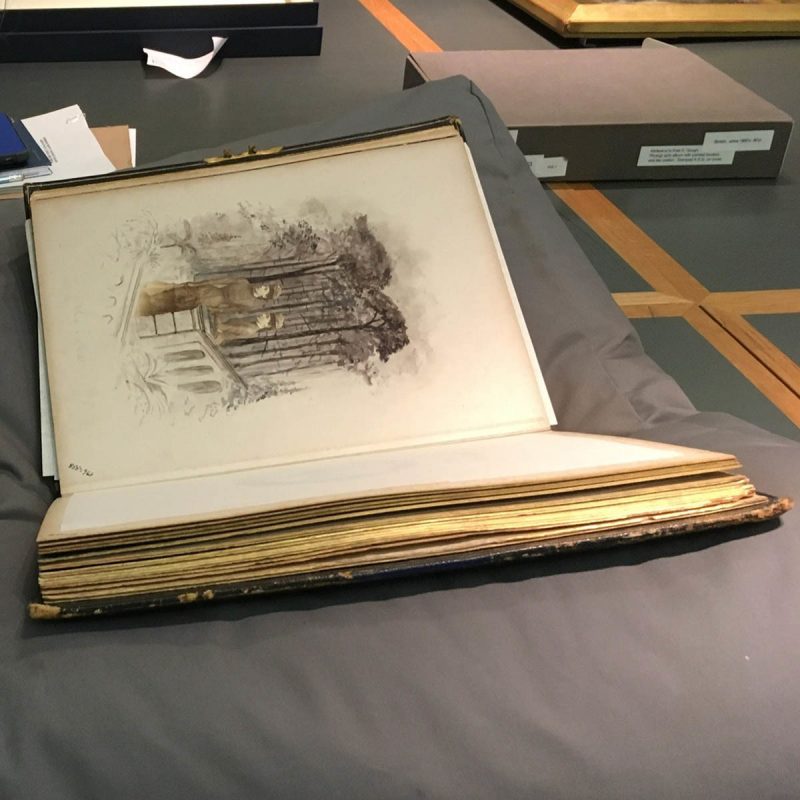
Kate Gough's Photo Album © Victoria and Albert Museum, London
We visited the Victoria & Albert Museum to see this extraordinary, imaginative, funny book first hand, and get an idea of how it was made and used by Kate. We were struck by its weight and the expensive leather binding, as well as the contents which were marvellously detailed.
We were able to take photographs of parts that we were interested in, some of which weren’t available online. Explore this image in more detail.
How does it compare with Millais’s painting of the girls?
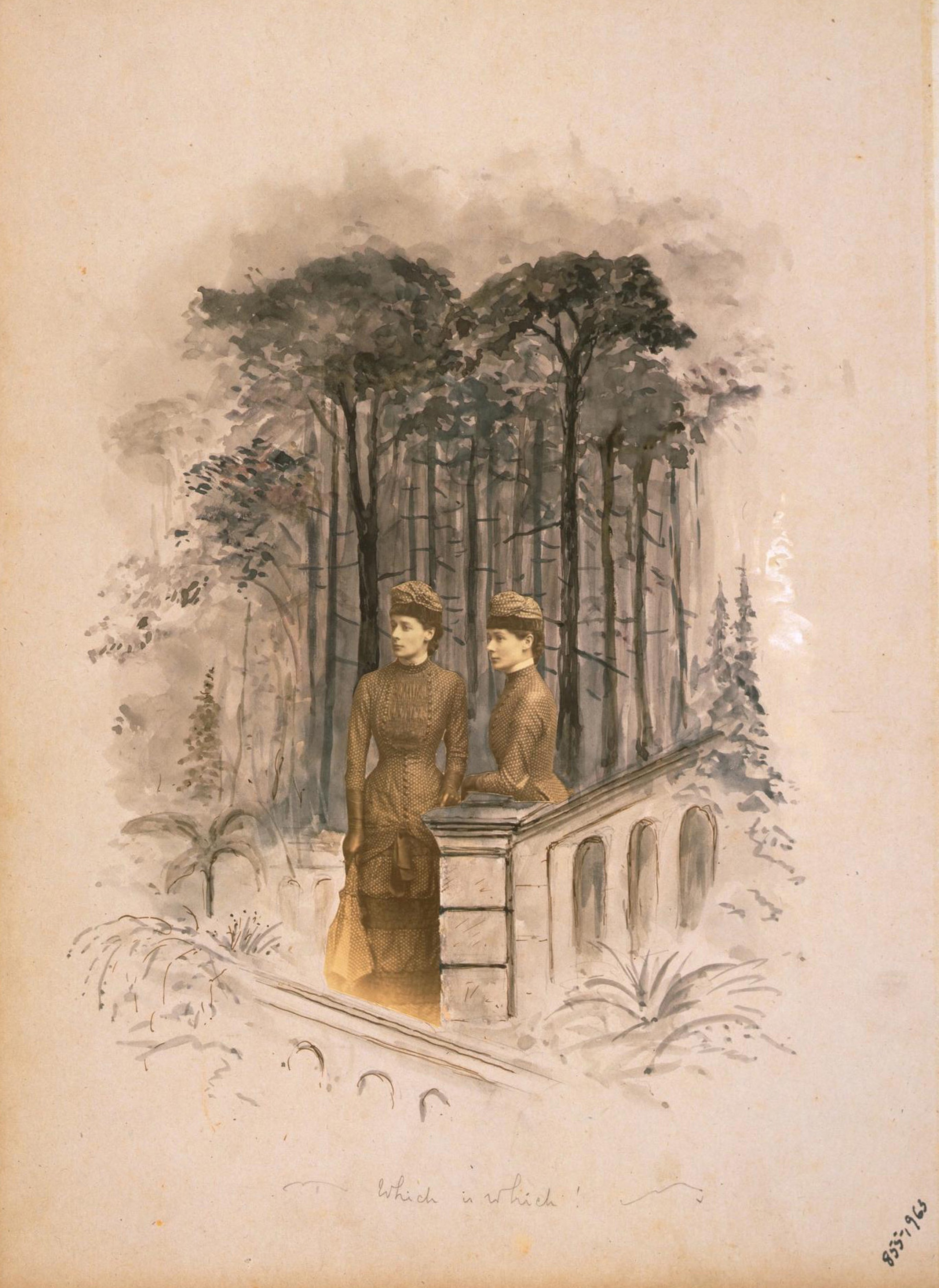
'Which is Which' image from Kate Gough's photo album. © Victoria and Albert Museum, London
Discovering Kate
By talking to the curators at the V&A, we found out that many aristocratic Victorian women created albums of photo-collages like this in their spare time. They would then bring them out to entertain friends and family at social events.
After our visit to the V&A we did some more research into Victorian photo-collage and discovered that there had been an exhibition on the subject at the Metropolitan Museum in New York in 2010, in which Kate’s album had been included. This helped us put Kate’s work into context and we realised this was another potential avenue for research.
By analysing and comparing sources within your own research project, you might discover new ideas or routes to explore. This can be used as evidence of critical analysis with clear links made to appropriate theories and concepts within your EPQ.
Now you’ve found a little out about Kate, look back at the painting. Does it change how you look at her? What else would you like to know? How might you go about finding out?
Consider which research material would be most suitable to follow your line of enquiry.
6. Why are they wearing those outfits?
We were interested to find out why the twins were show wearing such similar outfits in the painting. Who might they have been influenced by?
Conversations with colleagues at the Fitzwilliam Museum led to a suggestions that their clothes could have been influenced by the Danish Princesses Alexandra and Dagmar. And indeed photographs of this pair that we found in the collections of the National Portrait Gallery and the Museum of London, do show them dressed in a very similar way.

Princess Alexandra And Dagmar Of Denmark In Military Outfits
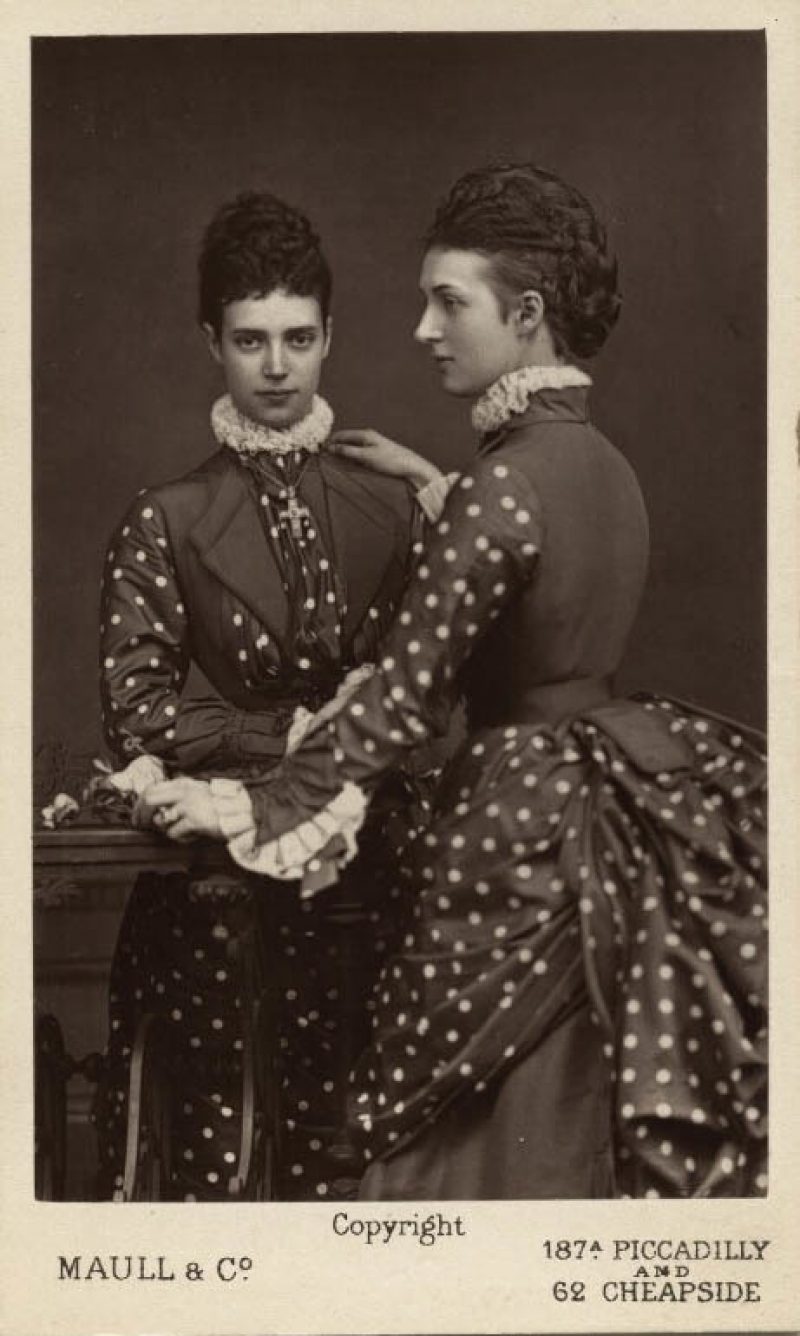
Maria Feodorovna, Empress of Russia (Princess Dagmar); Queen Alexandra © National Portrait Gallery, London
DO YOU THINK THEY COULD HAVE INFLUENCED KATE AND GRACE HOARE?


In Kate’s photo album, we found another image of her with Grace, both wearing polka-dot dresses. In this photo the pose is very similar to that in the painting by Millais.
So, our research started with a careful examination of the painting, which prompted us to find out more about the sitters and the artist. Our investigation then led us to explore the broader social context and fashion of the time.
What would you suggest that we do next to continue this investigation?
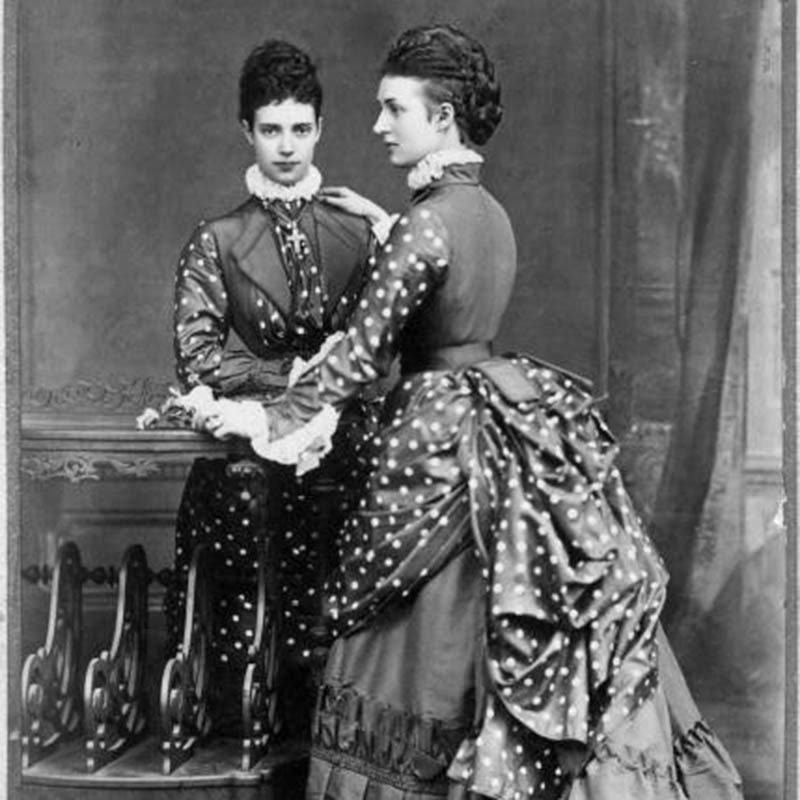
Maria Feodorovna, Empress of Russia (Princess Dagmar); Queen Alexandra © National Portrait Gallery, London
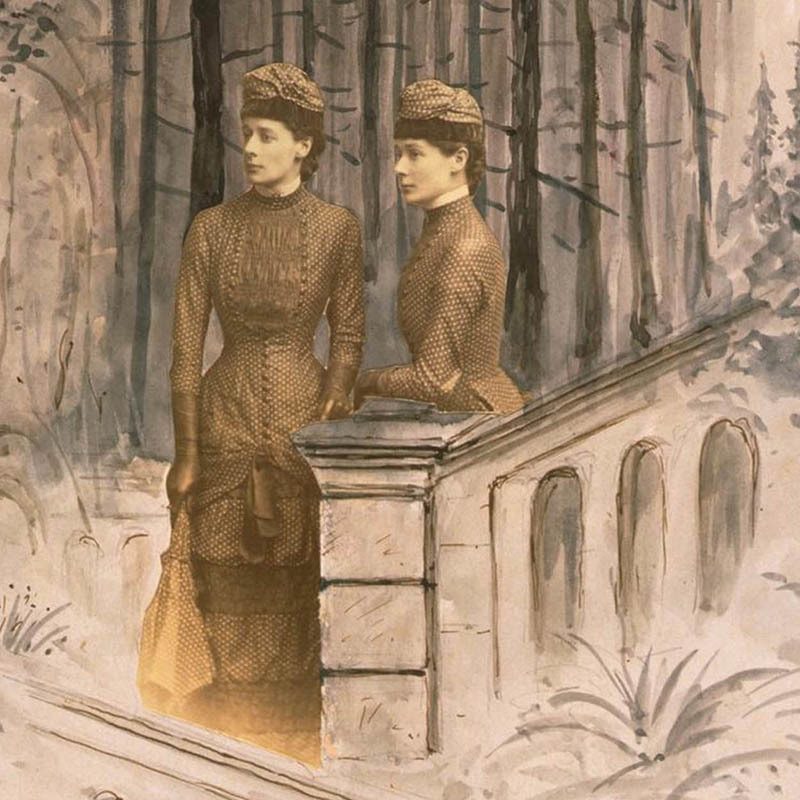
7. What next?
Our research project led to some unexpected discoveries, and pointed the way to many other possible avenues of research. We came to the end of our project and decided to create this resource to tell others about our journey.
However, there is still much more to discover about the painting.
What questions would you ask next?
Under A02 you need to demonstrate that you can obtain and elect form a wide variety of sources. Here is a list of additional places where you might go to carry out further research on Millais and the Twins.
Museums and Galleries containing Millais' work:
National Portrait Gallery, London
Victoria and Albert Museum, London
The Fitzwilliam Museum, Cambridge
Archives:
Heinz Archive at the National Portrait Gallery, London
National Art Library, Victoria and Albert Museum, London
Prints and Drawings Study Room, Victoria and Albert Museum, London
King's College Archive, Cambridge
The National Archives, London
Cambridgeshire County Council Archives, Cambridge
National Gallery Archives, London
Don't forget that there are other ways of researching, including interviewing people, reading articles and spending time looking at objects and paintings in museums and galleries.
With your own EPQ in mind write a list of research material that would be relevant for your project, and where you might go to find or create a range of primary or secondary sources.
Credits
This research project was carried out by Kate Noble, Lucy Sercombe and Lucy Shipp with the help of a bursary from Understanding British Portraits Professional Partnership Fellowship. This generous grant gave us the opportunity to look in greater depth than we’d been able to before at one of the museum’s most popular paintings.
With special thanks to: Lynda Clark, Georgina Doji, Peter Funnell, Robert Lloyd Parry, Inga Jones, Eleanor Knox, Tim Knox, Nicolle McNaughton, Jane Munro, Sarah Pearce, Caroline Pegum, Frances Pene, Caroline Pickard, Ina Pruegel, Beatrice Reid, Special Design, Henrietta Ward, Timothy Winn, Simon Valentine, Rich White Paul Hearn and the Year 12 Art students from Nicholas Breakspear Catholic School.
Thank you also to Aileen Derrett and Celia Barlow descendants of Kate and Grace who contacted us after seeing the resource with additional information about the family.

